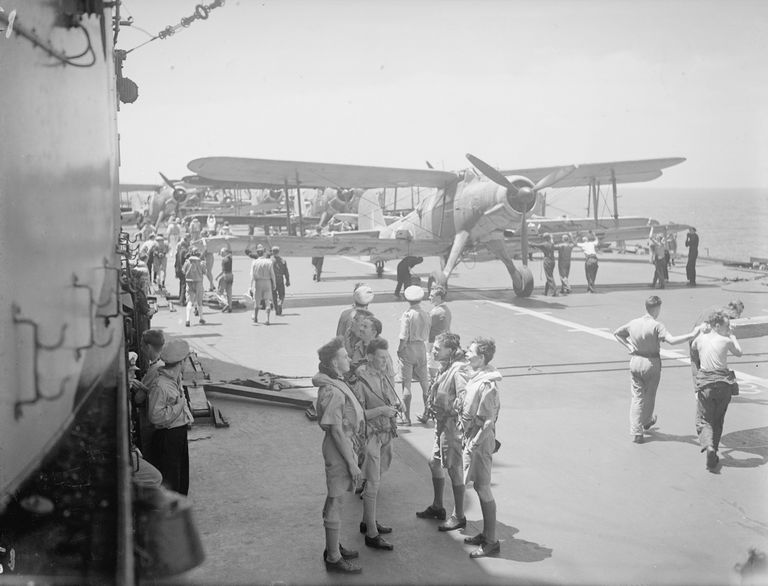
Hearts of Steel
May 1941. The Royal Navy in the Eastern Mediterranean has its back to the wall.
Hearts of Steel re-tells the history of the Royal Navy from a fresh perspective beginning in 1918 to World War 2 and its darkest hour, May 1941, the Battle for Crete.
In 6 short videos I describe how I came to write Hearts of Steel. Scroll down for more.



Herbert Leader was my great grandfather (left). His service record (right) provided a framework for the story. Not a biography of the man, but a career that during peacetime took him to the East Indies aboard the cruisers Effingham (above L & R) and Hawkins. Both commissions were documented by the crew and published, these books have been source material for part one of Hearts of Steel.


In 1938, Herbert was assigned to HMS Nubian a brand new Tribal class destroyer. Her first assignment was to the Mediterranean before World War 2 broke out. Below she can be seen with her initial pennant number F36 and red, white & blue identification markings on 'B' Turret.


Genreal Carton De Wiart was Commander in Chief of the allied forces that landed at Namsos, Norway. A holder of the Victoria Cross, he lost a hand, an eye and survived a head shot during his career. He spent some time on Nubian during the campaign when she carried out command and control duties in Namsen Fjord.
263 Squadron RAF were flown from a carrier to the frozen Lake Lesjeskogen. Equipped with Gladiators (right), they were soon attacked and despite putting up a spirited defence it was not long before all their aircraft were destroyed.

The port of Namsos was bombed almost out of existence during the campaign. Nubian aided the evacuation of the British and French troops under constant attack from the air 1 & 2 May 1940.


Nubians CO was Commamder Richard Ravenhill. She joined the 14th Destroyer Flotilla with Captain (D) Philip Mack (above) as overall commander aboard HMS Jervis (right), although he would often command aboard Nubian if Jervis was under repair or out of action. Mack was one of the most successful destroyer leaders of the war.

The C-in-C of the Eastern Mediterranean Fleet was Admiral ABC Cunningham. His memoir, 'A Sailors Odyssey' was invaluable in the writing of Hearts of Steel.

HMS Jervis. Leader of the 14th DF

At the time, the aircraft of the Fleet Air Arm were obsolete. There were three types that were deployed aboard the carriers. The Fairey Fulmar (below) was the fighter element. Whilst it was powered by the Merlin engine of Spitfire and Hurricane fame it was underpowered, although it was easy to fly and was generally liked by its pilots.


The Carriers arrive...
During 1940 and 1941 the new armoured carriers Illustrious and Formidable (left) were assigned to the Eastern Mediterranean Fleet to provide much needed aircover. Nubian provided close escort and screening duties for the carriers and the main battle-fleet.

The Fairey Swordfish, whilst slow and almost of another era, was loved by its pilots. Nicknamed the Stringbag by aircrews because of its ability to carry out a number of roles, it would become famous for its contribution towards the sinking of Bismarck and the attacking of the Italian fleet at Taranto on the 11th November 1940.
The Fairey Albacore (below left) was the replacement for the Swordfish. Not as well known, but still liked by its pilots, especially as they enjoyed the relative comfort of an enclosed cockpit. The Albacores of Formidable were instrumental in the success of the fleet at the Battle of Matapan.
Reconnaissance
The RAF carried out vital long range reconnaissance using Shorts Sunderland flying boats (below left) and Martin Marylands (below right). Both were used with effect in preparation for the attack on Taranto harbour and the Battle of Matapan.

Adrian Warburton (top right) became one of the most famous reconnaissance pilots of the war. His flights over Taranto harbour confirmed the presence of the Italian fleet,




Fliegerkorps X
In December 1940 Fliegerkorps X of the German Luftwaffe with their Stuka JU87R dive bombers were posted to the Mediterranean with one specific task. To sink the Illustrious. Major Walter Enneccurus (left) would have a leading role in the attacks on her and both Formidable and Nubian. All with consequences for the men aboard the ships during the Battle for Crete.
The 500kg (1000lb) SD bomb (bottom left) was slung below the Stuka, it could be set with either a delayed or immediate detonation fuse. Enneccurus flew the long range R version of the JU87 with drop tanks as seen below.

We need your consent to load the translations
We use a third-party service to translate the website content that may collect data about your activity. Please review the details in the privacy policy and accept the service to view the translations.

